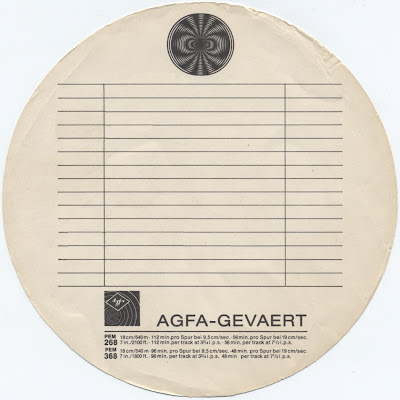Agfa PEM 268
Made in Germany
First produced in 1973
1/4 inch black backed tape
18cm/540m 7in/ 2100ft
112 min per track at 3.75in/sec
56 min per track at 7.5in/sec
 |
| rigid plastic cassette |
 |
| black backed tape |
 |
| dark grey plastic 3 hole reel |
 |
| track list insert |
 |
| backing peels off as it runs against tape tension arm |
 |
| debris collects on the floor |
I recently ran an internet query to find out if this type of Agfa tape was "sticky" but could not find it included in any bad tape lists. So I have published the results of my own test.
My pre-owned used tape had a black backing so I was suspicious it might be sticky. It is not advisable to play sticky tape as it would result in smearing on the heads, which could be difficult to remove. My test confirmed the tape was bad.
The tape looked and felt fine. It was mounted on the deck and then fast forwarded. Slivers of the black backing material peeled off and dropped down to the floor. This debris was not sticky, it felt dry and did not leave any stain if rubbed between thumb and forefinger. Because the debris was not greasy, I did also play the tape very briefly at the beginning, at the middle and at the end. Surprisingly, it did play well, so I guess a bad tape could be copied if the recorded content needed to be salvaged. However, it might be necessary to copy the recorded material in stages, cleaning the heads at each stage.
This type of Agfa tape, although bad, is not nearly so awful as bad Ampex tapes which can make a terrible sticky mess on your heads and tape path.
Both the Agfa reel and cassette are quite attractive and useful so have been retained but the bad tape has been binned (and not sold on Ebay).
I have previously experienced other types of bad Agfa tape (eg PEM 369 even when new and PEM 368). However some types can still be very good (eg PEM 468).
No comments:
Post a Comment